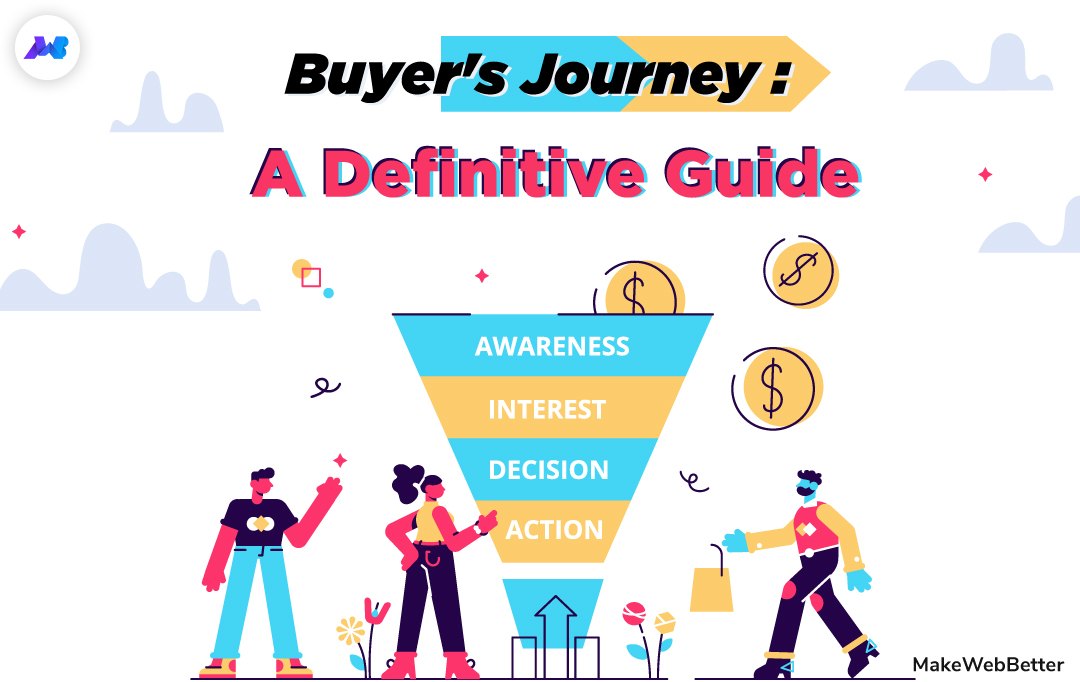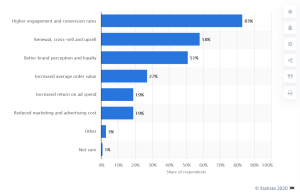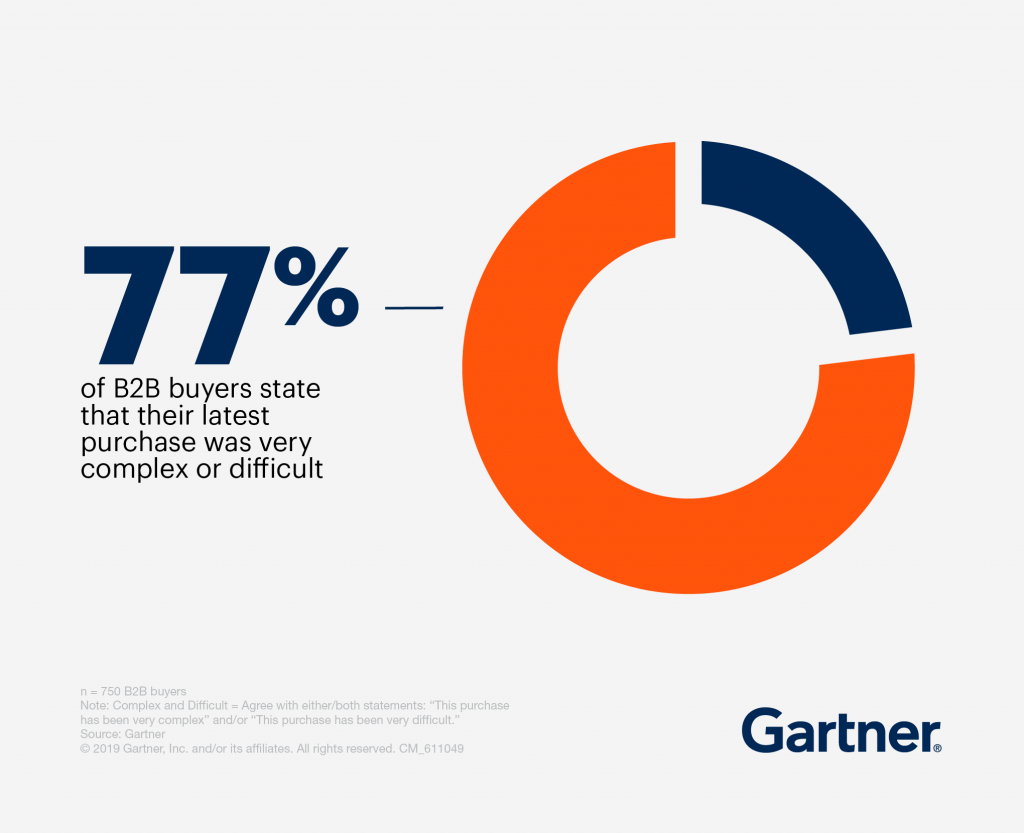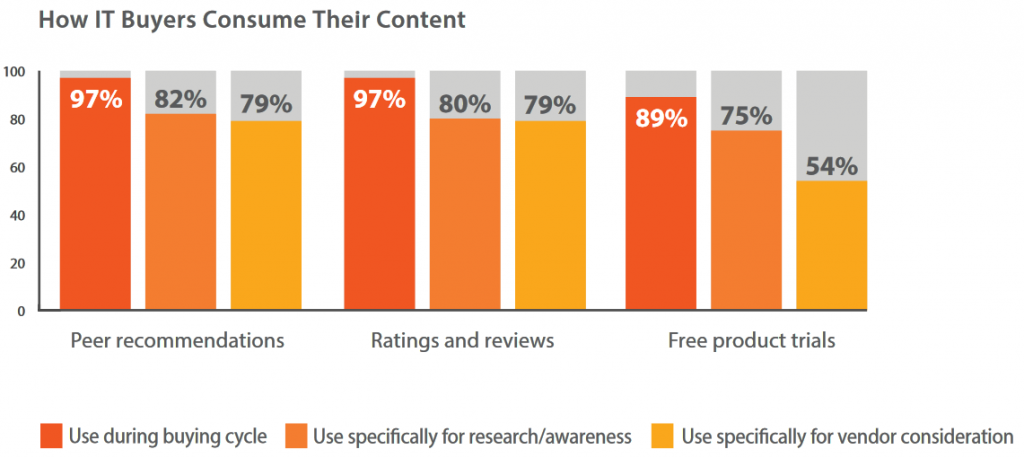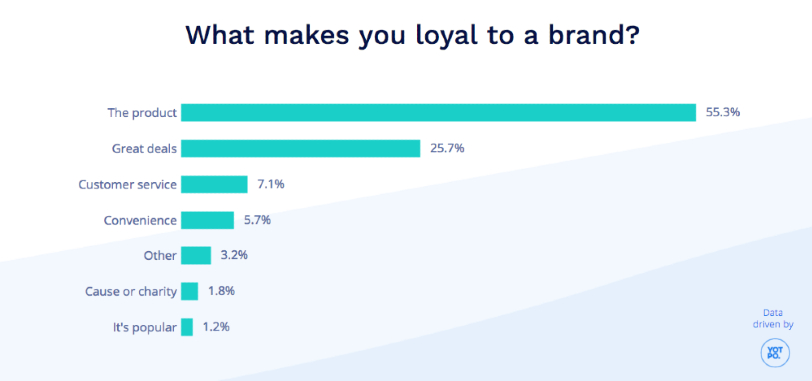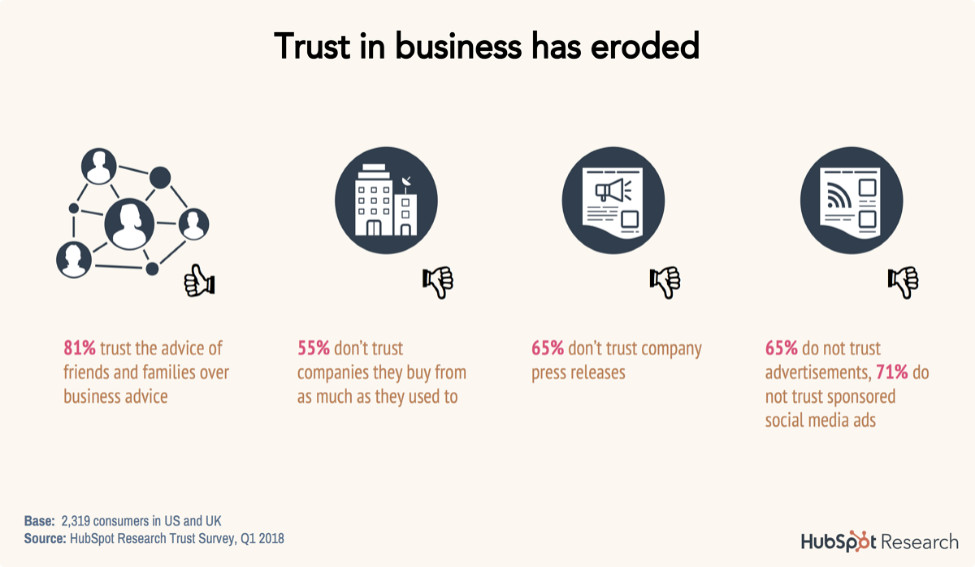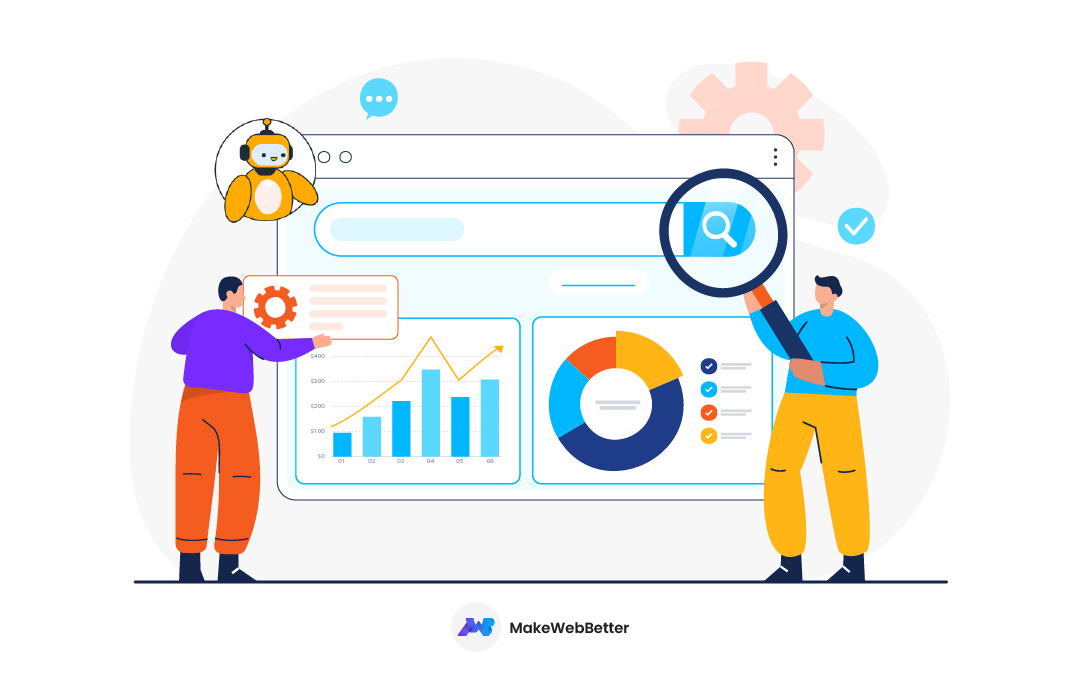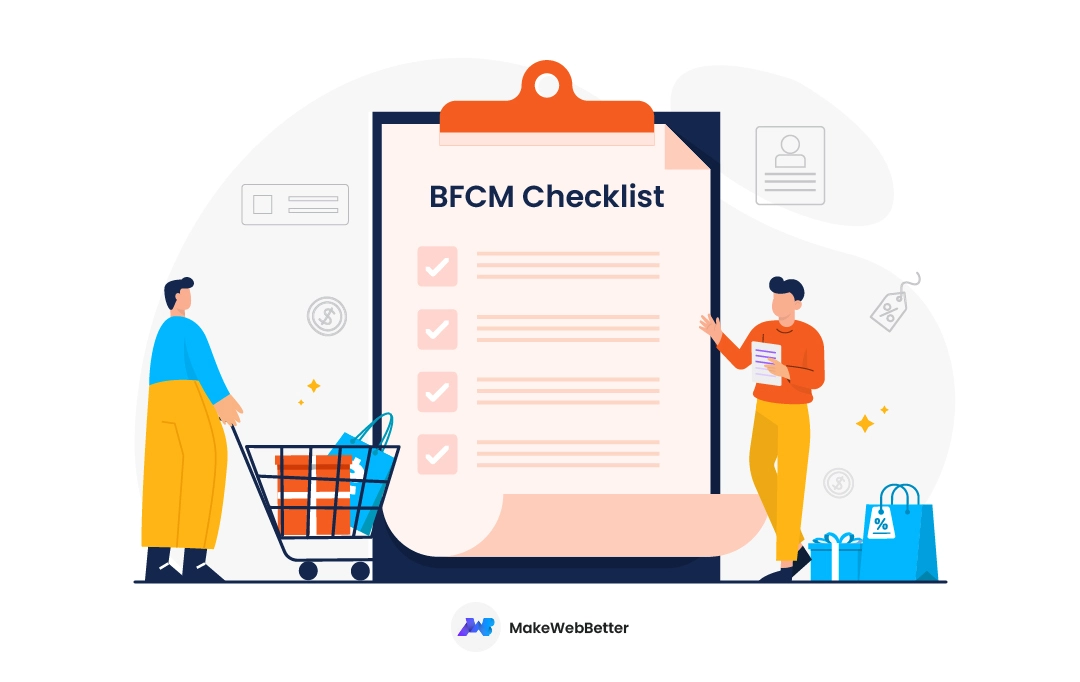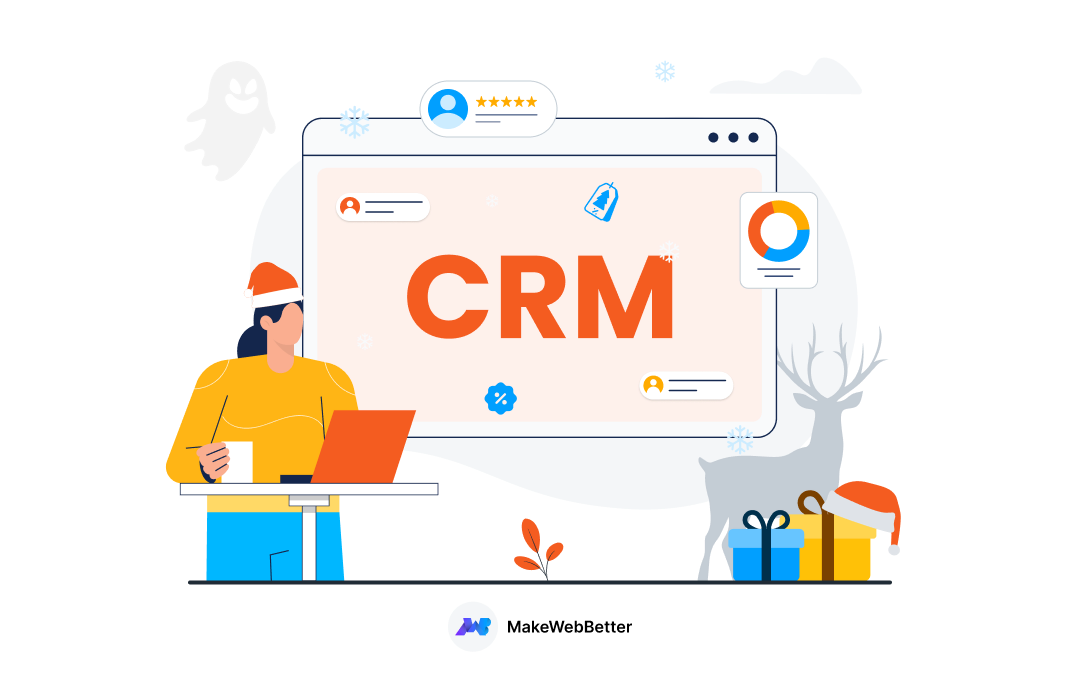The buyers of today try to learn and understand a product before purchasing it. They are smart and calculative. Buyers want to know ‘if’ and ‘why’ they need your product. Evaluation and research have become an inseparable part of the buying process.
Buyer behavior dictates how customers make buying decisions. And the buying process is a journey, which is taken into account while forming an inbound marketing strategy.
In fact, the framework of marketing strategies is based on the buyer’s journey.
In this article, i have had talked about buyer’s journey and all its aspects. This is a definitive guide of buyers’s journey.
Now, the golden question is…
What is the Buyer’s Journey?
According to HubSpot, the buyer’s journey is the process buyers go through to become aware of, consider, and evaluate, and decide to purchase a new product or service.
This definition tells us that there are three stages of the buyer’s journey:
- Awareness
- Consideration
- Decision.
Now, I will describe the buyer’s journey stages in detail and also tell you how to nurture your customer on each stage.
Awareness Stage
In this awareness stage, the buyer realizes or becomes aware of a problem or need. The buyer identifies an opportunity to address the problem, starts his research to find a solution, and decides the primacy of the problem.
This is the beginning of the buyer’s journey.
For example: Sam is looking at the analytics of his eCommerce store and he realizes that bounce rate has increased over the last few months. He recognizes that he has a problem.
Consideration Stage
At this stage, the buyer starts addressing his problem or challenge. Here, the buyer is searching for providers of the desired solution and knows how to reach his goal. This is the middle stage of the buyer’s journey.
For example: Sam later discovers that his website load time has increased which is increasing the bounce rate. He starts searching for ways to decrease the load time of his online store.
Decision Stage
This is the stage where the buyer makes the final purchase decision. The buyer has compared the pros and cons of possible alternatives to the solution (product or service).
And now has solid research and knowledge to reinforce his purchase decision.
For example: Sam finds out that his web hosting service is slow and he opts to an expensive but better web hosting service. In a few weeks, his bound rates decline and traffic increases.
Here are the “leading benefits of understanding customer journeys” according to marketing professionals worldwide as of November 2016.
Well, now you know the stages of the buyer’s journey but how do you use this knowledge to help your business?
How do you move customers through the buyer’s journey funnel and convince them to purchase your product or service?
You do that by nurturing your buyer at every stage of the buyer’s journey. It is also known as customer nurturing or lead Nurturing.
So..
What is Customer Nurturing?
Lead nurturing is the process of building a positive relationship with your buyers and reinforcing that relationship by providing value. And here is how nurturing is done:
Awareness Stage Nurturing
Buyers do realize their problems or challenges by themselves. But you can also identify problems or challenges for them and give realistic goals to pursue by creating insightful content.
Create content that highlights a problem, challenge, or need and provides solutions for the same. The primary objective is to give valuable knowledge to your customer.
To nurture your buyer, you can use the following types of content:
- Articles and Blog Posts
- Ebooks
- Videos
- Podcasts
- White-Papers
- Infographics
- Social Media Posts
In the awareness stage, you have to utilize the power of content marketing to attract buyers.
72% of marketers say content marketing increases engagement.
Proper use of content helps the buyer to identify their goals and challenges. Also, your originally created content makes the buyer notice your brand or business.
Consideration Stage Nurturing
At the consideration stage, buyers have defined their targets and problems with clarity. And are actively looking for a solution. So, this is where you provide a solution and show them how you can solve their problem.
Content at this stage should be focused on providing solutions but in such a way that displays your ability to help the buyer.
The content should be insightful and suggestive.
Types of content to use at the consideration stage:
- Blog Posts
- Articles
- Tutorials
- Customers Testimonials
- Product Trails
- E-seminars or Webinars
- Product Guides
- Ebooks
- White-Papers
The primary role of created content at this stage is to build trust by providing valuable solutions to the buyer.
In fact, 96% of the most successful content marketers say that content marketing has helped them build credibility and trust with their audience.
Decision Stage Nurturing
This is the final stage of the buyer’s journey and the buyers have got it all figured out. The buyers have defined their problem, they have understood solutions provided by you, and have also looked at the alternatives.
It’s time to make the purchase decision.
You have to assure the buyer that you are the best in the business. Also, make the purchase process easy and attractive.
The role of ‘user-generated content’ is huge at this stage.
In the decision stage, it all comes down to these following factors:
- A reasonable price of your product or service
- An attractive offer on the purchase
- Suitable discount
- Available methods of payment
- Reviews and ratings that reinforce the trustworthiness of your brand
- Satisfied customer testimonials
Let me explain these factors in detail:
Price and Offers
In this highly competitive market, keeping a reasonable price, and giving a discount is important. Giving a limited-time offer also helps close the deal sometimes because it creates a sense of urgency in the buyer’s mind.
Credibility
Reviews, ratings, and testimonials are crucial nowadays because those are the first things buyers look for when they are evaluating you.
In fact, 90% of consumers read online reviews before visiting a business.So, utilize user-generated content as social proof and increase your credibility.
For reference, you can check out how we showcase our reviews and ratings at MakeWebBetter.
Ease-Of-Payment
Availability of different payment options is often undermined but it is a determining factor. You need to allow payments from payment apps, internet banking, credit and debit cards, and other popular payment systems.
Basically, you gotta make it easy for buyers to purchase your product.
Up until now, I have only introduced you to the general definition of the buyer’s journey and the content that goes along with it.
Now, I will go deeper into the subject and talk about the B2B and B2C buyer’s journey.
B2B Buyer’s Journey
Business-to-business buyer’s journey consists of the three general stages; that is, awareness, consideration, and decision but the approach is different because businesses buy collectively and there is always a group of individuals making multiple purchase decisions.
Within a business, the presence of a buying group elongates and complicates the buying process and leads to the addition of more stages in the buyer’s journey.
Let’s look at the B2B buyer’s journey stages:
Awareness: This is the stage where businesses identify a problem or a need.
Research: The buying groups start searching for all possible solutions.
Evaluation: The solutions are segmented on the basis of their affordability and applicability.
Selection: The best supplier of the solution is selected at this stage.
Purchase: Lastly, the budget allocated for that particular product or service is utilized in the final purchase decision.
This seems easy on paper but it’s not. Firstly, there is always a need for consensus on every stage of the B2B buying process because a group of buyers is involved.
Everybody needs to be on board.
Secondly, the buying process isn’t straightforward in B2B. And lastly, It lacks linearity because there is a lot of reconsideration and many stages are revisited by buying groups.
In a survey, 77% of B2B buyers agreed that they conduct a more detailed ROI analysis before making a purchase decision.
Businesses don’t make hefty purchase decisions.
Role of Content in B2B Buyer’s Journey
The role of content in a business-to-business buyer’s journey is the same but some types of content are more appreciated by the B2B buyers. Such as:
- Business Reports
- White-Papers
- Products Comparison
- Product Guides
- Demo Videos
- Supplier Comparison
- Articles
All of these content types help the buying groups conduct an in-depth analysis of the business they are going to purchase from.
The aim of the content creators here is to provide information that makes it easier for B2B buyers to advance their buying process.
Simplification of the Buying Process
The B2B purchase process is complex and the toughest part is purchasing the product. So, increase the ease of purchase to advance your buyers through the buyer’s journey funnel.
This study shows “the most effective content types in demand generation” during various stages of the buyer’s journey according to B2B marketers in North America as of July 2018.
B2C Buyer’s Journey
The business-to-customer buyer’s journey is linear and simplistic, which makes it easy for sellers to map out.
Here are the stages of a business-to-customer buyer’s journey :
Awareness Stage
The buyers perceive their problems, challenges, and needs. To engage buyers at this stage, these content forms are needed:
Types of Content Used at Awarness Stage
- Blog posts
- Informative Articles
- Ebooks
- Infographics
- Videos
- White-Papers
- Social Media Advertisements
- Search Engine Advertisements
For example- Adam started weight training at the local gym. He read articles at bodybuilding.com to increase his knowledge of weight lighting. He became aware that he needed quality Whey protein to gain size while weightlifting.
Consideration Stage
This is the onset of a relationship between the buyer and the seller. The buyer has recognized his problems and is now searching for a solution. As a seller, you can provide the buyers with helpful content to solve their problems.
Present valuable information to awaken the interests of your buyers.
Types of Content Used at Consideration Stage
- Case Studies
- Webinars
- Product Demostrations
- White-Papers
- Product Trails
- How-to Blogs and Explainer Articles
For example- Adam read many articles on bodybuilding.com related to protein use and its benefits. He started looking for more affordable whey protein supplements.
Decision Stage
Here, the buyer has acquired all the information he needs in order to make the purchase decision. At this stage, buyers start evaluating various suppliers that are offering the needed solution.
This research shows people trust recommendations, user reviews, and ratings to complete the purchase process.
Types of Content Used at Decision Stage
- Case Studies
- Customer Reviews and Ratings
- Discounts
- Offers
- Comparisons with Other Suppliers
- Buyer Testimonials
For example- At bodybuilding.com, Adam read articles, watched customer testimonials, read reviews and ratings. He also found a product comparison at bodybuilding.com which eradicated the last bit of his hesitation and he ordered Whey protein from their store.
Retention Stage
The buyer purchased a suitable product from you and has established a relationship by becoming a paying customer. Therefore, trust has already been established. Now, its all about maintaining that trust.
When a customer is rewarded after making a purchase, he or she is likely to purchase again from you because you positively reinforced his or her buying decision.
So, this is where you turn your newly formed customers into loyal customers that return to your store for more products.
Becuase, acquiring new customers can cost five times more than satisfying and retaining current customers.
Tpyes of Content Used at Retention Stage
- Offer Rewards On Purchase
- Personalized Follow-up Emails
- Relevant Product Recommendations
- Relevant Offers
In summary, offering value to customers along with your product should be your primary objective.
Like a ‘Thank you’ email to customers right after the purchase would give a personalized experience.
For example: Right after Adam made the purchase, he received an onboarding email from bodybuilding.com and also started receiving emails of best offers. He also received a 5% discount on his second product purchase.
Promotional Stage
At this stage, you have earned the loyalty of your buyers and provided them the quality product or service they were looking for. The buyers will keep using your service or products and return to you for more.
Make sure to offer great customer service and user experience to your buyers, and nurture them at every stage of the buyer’s journey.
But your product is the greatest factor responsible for making customers loyal to your brand. So, make sure you provide an excellent product.
The biggest achievement here is that the buyers willingly start promoting your products and services. You will get recognition through word of mouth.
It works better than mainstream ads because people put more trust in recommendations they get from friends and families.
You can further optimize this process of promotion by rewarding your customers for recommending you.
For this, you need an effective referral program. Let your loyal customers share the referral links on their social media and receive rewards like gift cards, reward points, gift coupons, etc.
Ultimately, this will help you get buyers that already trust your brand or company before engaging with you and increase your sales.
In the end, your objective is to turn your buyers into promoters for your products and services.
Now, you have to engage with your customers now and make them feel important.
Methods to Use at Promotional Stage
- Use Referral Rewards Program
- Give Exclusive Offers
- Assign Membership
- Personalize services
For example- Adam made several purchases for next few months. He shared referral links on his social media and earned gift coupons. He also talked about the benefits of buying whey protein from bodybuilding.com, which made his gym mates buy from the same e-store.
Okay, you have learned what a buyer’s journey is and what type of content you should use at its different stages but what remains to be discussed is how to use the buyer’s journey or….
The Application of Buyer’s Journey
Here is an imaginary case study to make you understand the application of the buyer’s journey.
I hope you all enjoy and learn.
Awareness
Jack is an aspiring athlete and he is performing well. He wants to improve his performance on the track. So, he uses the internet to search for ways to increase his running capacity.
Jack reads an article on fastshoes.com to learn the ways to increase his running capacity and to understand the factors affecting his performance. The blog is of a famous sports goods manufacturer.
Consideration
There he learns that he needs proper running shoes. He opens a recommended article that says “why proper running shoes are important” and after reading it, he recognizes that all aspects of his training and diet are fine except his running shoes.
Finally, Jack considers buying proper running shoes as he finishes the article. And then, he reads another blog post recommendation titled “Top 10 running shoes 2020.”
Decision
He sees the list of running shoes and reads about their individual benefits and decides to buy the most affordable one.
But Jack is conflicted and is having second thoughts. He searches for alternatives and luckily, finds product comparisons available on fastshoes.com.
He learns that his selected running shoes are the best in his preferred price range. Jack makes the final purchase decision. He orders the product and recieves it in a few days.
Retention
Jack goes out for a run wearing his new running shoes. He finds his shoes lightweight and comfortable. Jack is able to cover longer distances without fatigue. He is very satisfied with his new running shoes as his performance on the track has improved.
Jack visits fastshoes.com regularly and he also recieves notificiations of the offers and articles relevant to him.
Promotional
Jack’s best friend Dean asks him about the new shoes and Jack explains all the benefits he has received from switching to his new shoes. Dean, impressed by the words of his best friend, goes directly to fastshoes.com and orders the exact same running shoes.
After a year, both Jack and Dean need a new pair of shoes. And they still purchase running shoes from the same eCommerce store.
Takeaway
So, did you notice how Jack went through different stages of the buyer’s journey and became a loyal customer of Fastshoes.com?
It is easy to map out his buying journey from this example. And so, you know what you have to do.
You have to nurture the customer through every stage of the buyer’s journey to make them purchase your product and services. And this is how most businesses are improving their sales.
This research from HubSpot makes it clear that 81% trust their friends and family’s advice over advice from a business.
Final Thoughts
The buyer’s journey is the base of content marketing strategies.
I have explained the buyer’s journey, the use of the content at different stages of the buyer’s journey, and its application with a pretty accurate case study.
You can nurture your customer through every stage of the buyer’s journey and increase your sales with the help of proper application of the concepts explained in this article.
And hey, check out our other blog articles if you want to learn more about best eCommerce practices.

